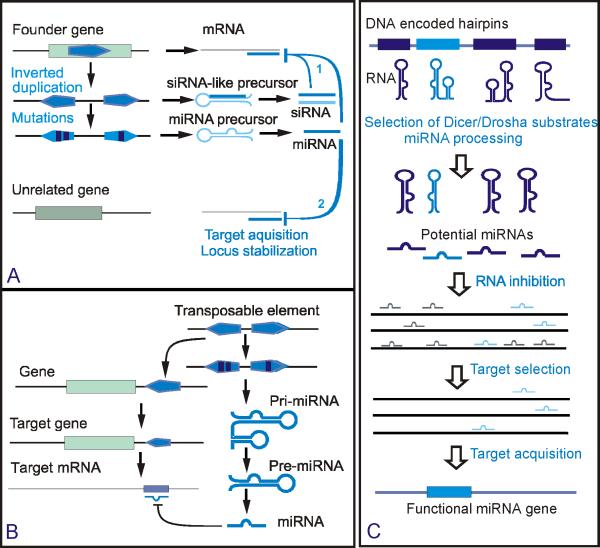Figure 2.
Genesis and evolution of miRNA loci. a) Inverted duplication model of the origin of plant miRNAs [45] and potential pathways of stabilization of new miRNA loci in plants [4]. A new miRNA is selected with the capacity to regulate the progenitor or a family member gene (1), or unrelated gene (2). b). Origin of miRNAs from genomic repeats or transposable elements in animals [48-52]. c) Random selection model of miRNA origin [53]. Potential miRNA genes are selected from hairpins encoded in the genome. Random targeting of transcripts by potential miRNAs could be deleterious with only a few targets being selectively neutral or advantageous. Acquisition and expression of a potential novel miRNA gene can occur only when, by chance, it is not strongly deleterious [41].

